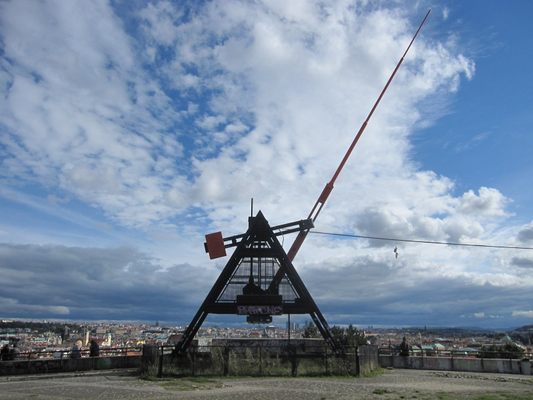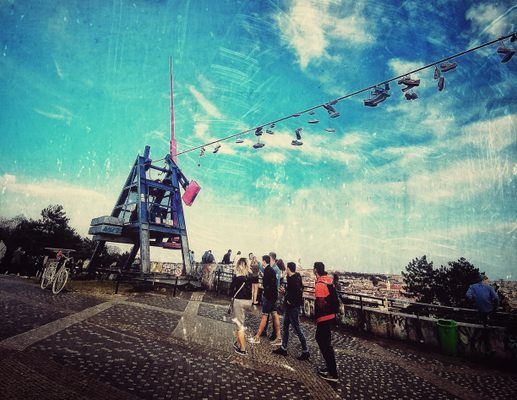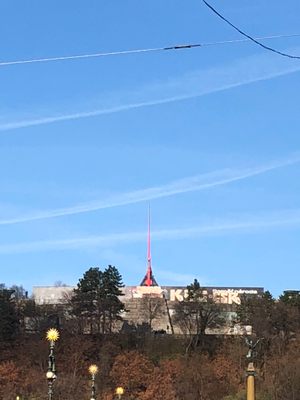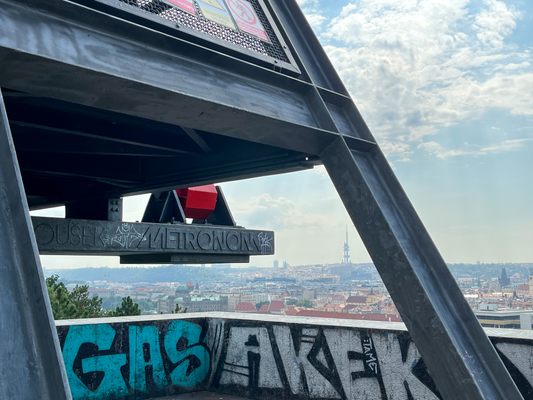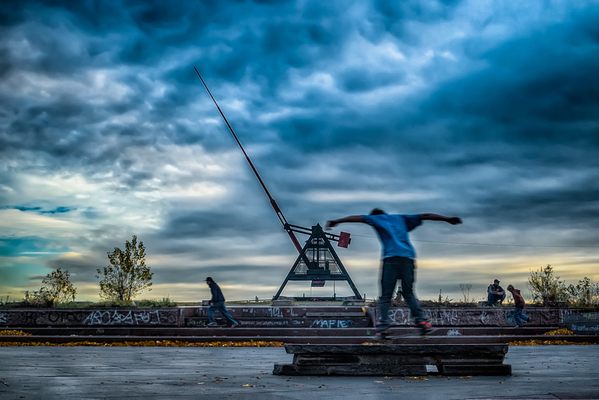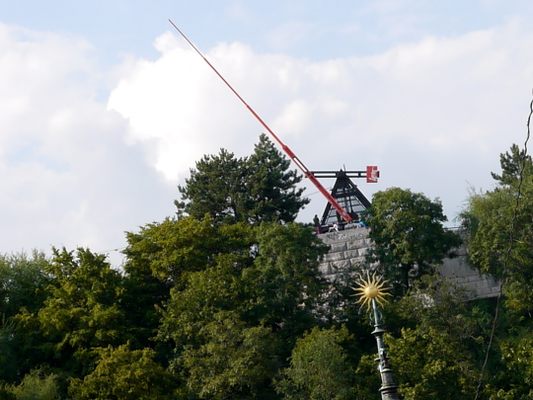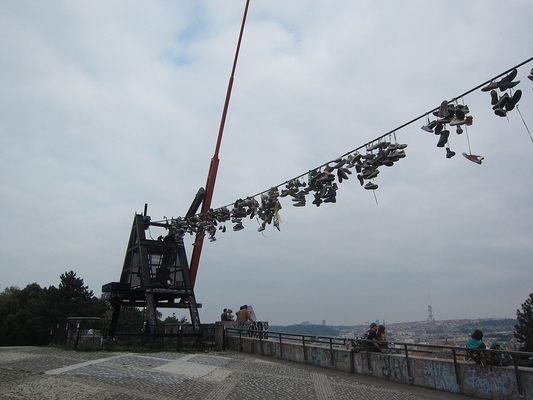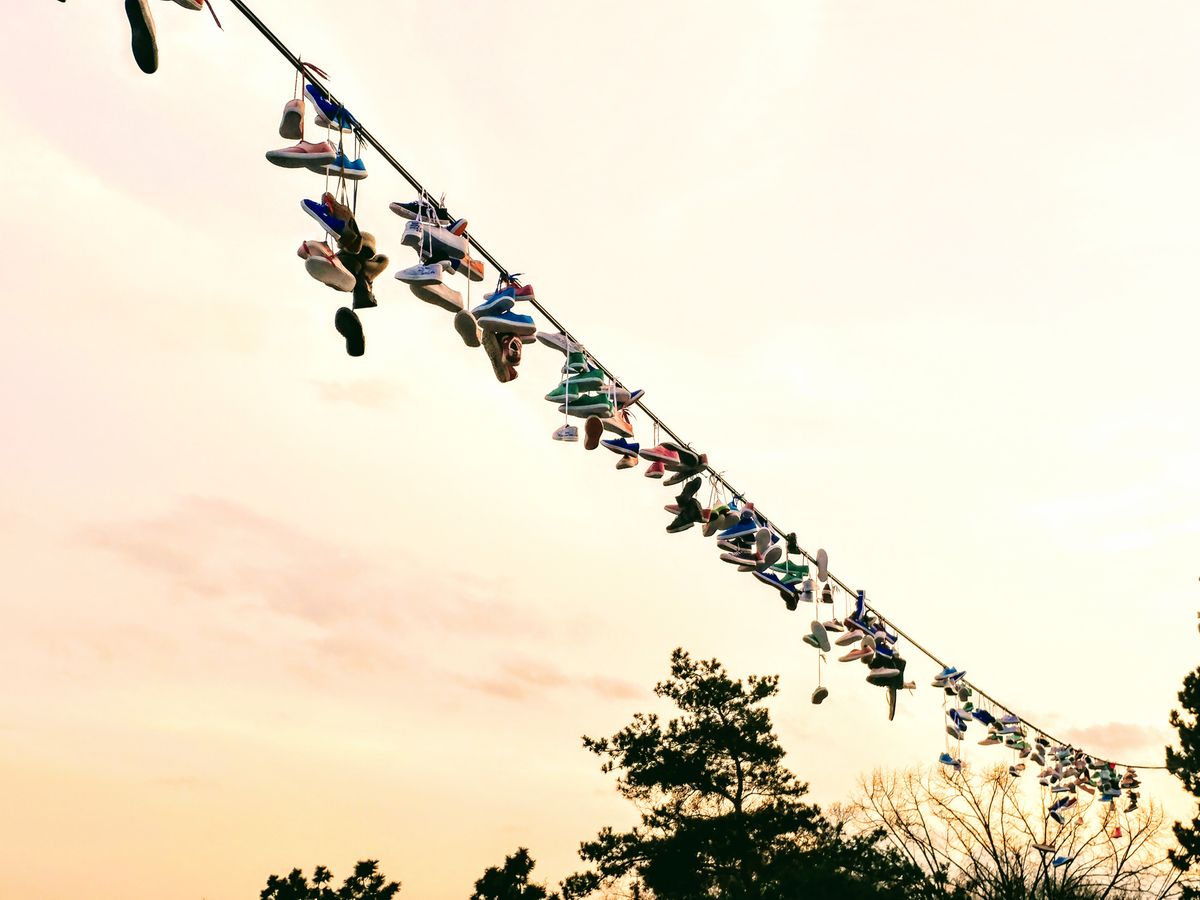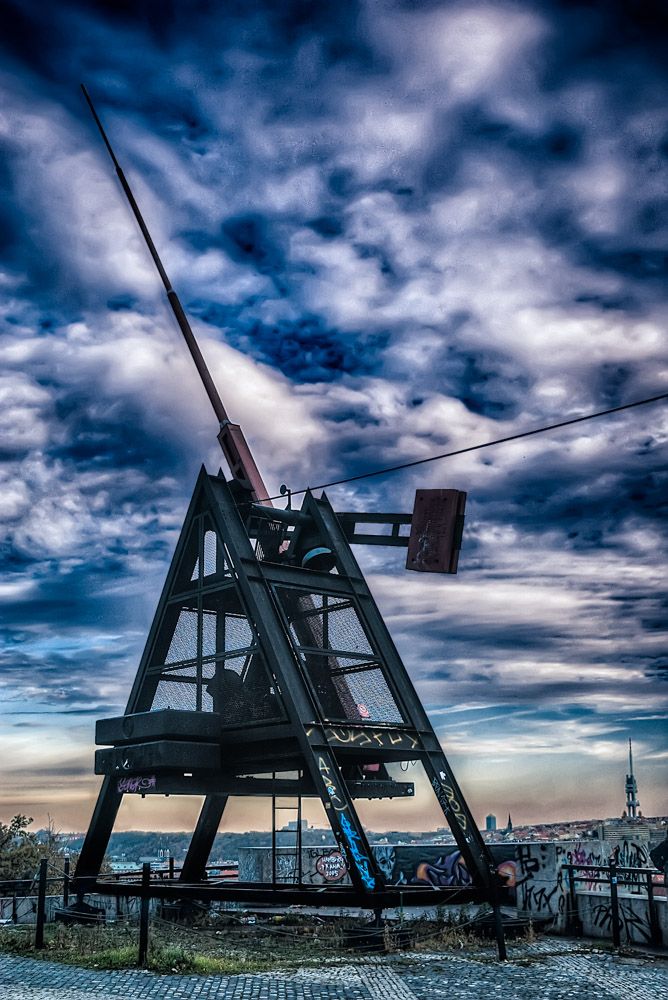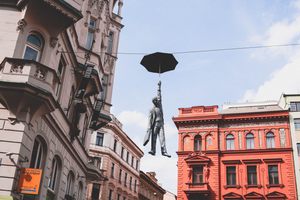About
Czechia is a state still in its infancy. It has only been twenty years since the Velvet Revolution peacefully ended communism and split Slovakia from the Czechia. Despite the bloodless divide, the time under Soviet communism is still burned into the minds of many Czechs and Slovaks, and in Prague, a constant reminder ticks away every day over the Bohemian capitol.
In 1991, Vratislav Novák designed and constructed a massive metronome on Letna Hill in Prague. Although the area is better known for its vibrant beer garden overlooking the river, Novák erected a permanent reminder in the area to memorialize the Czech struggles under communism.
Cutting a wide path, the hand of the red metronome is over 75 feet long and is easily visible from the city and bridges below. While the metronome itself symbolizes the long struggle against Soviet control, the location of the metronome is a symbol as well.
Prior to the metronome’s construction, the site atop Letna Hill was home to the largest statue of Stalin in the world. For seven years, a 17,000-ton statue of the Soviet strongman loomed over Prague, watching every move of the citizenry and quietly keeping control over the Soviet satellite.
After his death, Nikita Khrushchev took control of the Soviet Union and distanced himself from Stalin. In a symbolic act of the changing of the guard, Khrushchev ordered the destruction of the statue by dynamite, blasting the former dictator off of his perch over Prague. The explosion of Stalin’s statue led to rejoicing in the streets, along with another 30 years of communism in Czechoslovakia.
The metronome is a steady reminder of the legacy left by Stalin and communism in Prague. It is still flanked by two unlit torches, the only remnant of the statue that once existed there. Today, the area around the metronome is visited by tourists and used by many locals for skateboarding and picnics in the nearby park and beer garden. The area provides some of the best views of one of Europe’s most charming cities.
Related Tags
Know Before You Go
The metronome can be reached via the Malostranska metro stop and the tram stop Chechuv Most.
Community Contributors
Added By
Published
June 22, 2011
Sources
- Nelso.com: Prague Metronome: http://www.nelso.com/cz/place/236232/
- Wikipedia: Prague Metronome: http://en.wikipedia.org/wiki/Prague_Metronome
- Cezky Rozhlas: World's Biggest Stalin Monument Would Have Turned 50 on May Day: http://www.radio.cz/en/section/curraffrs/worlds-biggest-stalin-monument-would-have-turned-50-on-may-day
- www.go-czechia.com






